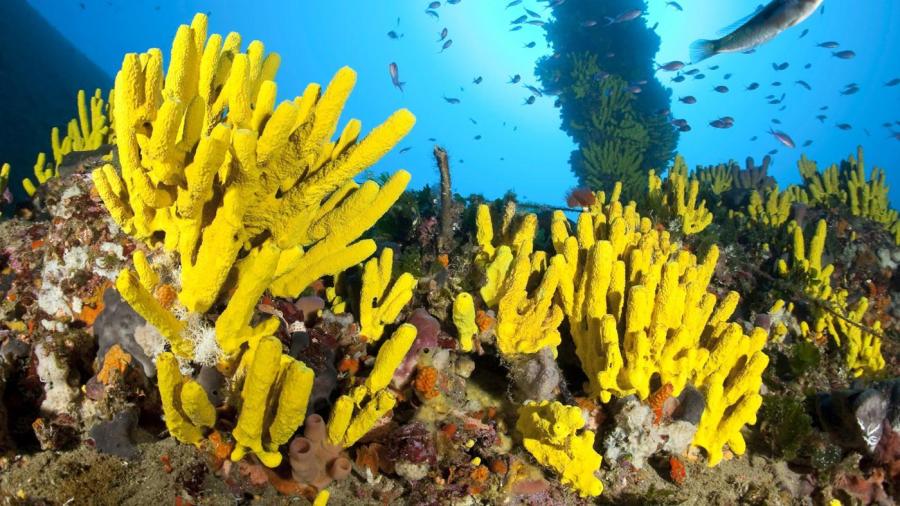What Are Characteristics of Sponges?

Sponges are extremely slow-moving or sessile filter-feeders that draw water through pores and specialized filter cells to gather food. Sponges are the most primitive type of animal in existence, featuring a cell-based organization where different cells have different tasks, but do not form tissues. All sponges live in the water, with a large majority of species living in the oceans.
Sponges gain their structure from a skeleton of collagen with reinforcing spicules of either calcium or silicon compounds. They are either radially symmetrical or asymmetrical. These structures are full of pores in which specialized collar cells sit, constantly drawing in water and filtering out food particles. The waste water is then pushed into a central chamber and out a large opening.
Sponges do not have tissues; thus, they do not have cardiovascular or nervous systems, nor do they have any muscles or sense organs. Some species of sponges produce only one type of gamete, while others produce both. Sponges release sperm into the water; there they are captured by other sponges just like food particles. However, the collar cells change when they encounter gametes, enabling them to carry the cells to their own eggs. Sponges also sometimes reproduce asexually via budding.





